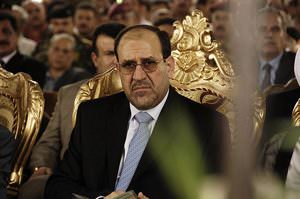Pacifying Dr. King
The U.S. Commission of Fine Arts has rejected a statue intended to stand at the memorial of Martin Luther King. The members expected a more passive depiction. Clearly the commission has some brushing up to do on American history.WASHINGTON — We should all be able to agree that the Rev. Martin Luther King Jr. was “confrontational.” He was also wise, measured, visionary, good-natured and generous of heart — like most great figures in history, he was complicated. But he didn’t ask for an end to Jim Crow repression, he demanded it; he didn’t request equal justice, he required it. Confrontation, basically, was the whole point.
The U.S. Commission of Fine Arts apparently believes otherwise and has kicked off a useful debate — more of a reality check, actually — about how King is remembered. It seems to depend on who’s doing the remembering.
At issue is the statue that will stand as King’s official monument in Washington. The arts commission, which rules on the aesthetics of such memorials, has sent a letter complaining that the depiction is “a stiffly frontal image, static in pose, confrontational in character.”
What they thought they were getting, commissioners wrote, was a “dynamic” and “meditative” King. Leave aside for the moment the question of how any sculptor is supposed to make someone look both dynamic and meditative at the same time. The point is that the arts commission, for some reason, was not comfortable with the image of a stern-faced, 28-foot-tall black man who has his arms crossed. [Editor’s note: To see a model of the statue, click here, then click on the image to enlarge. The article also includes an image of the King/Gandhi photo mentioned below.]
That’s what Lei Yixin, one of China’s most celebrated sculptors, is concocting. There was grumbling from American artists, especially black American artists, that a Chinese sculptor was chosen to create our nation’s monument to King. Now, however, African-American commentators are rushing to defend Lei’s “confrontational” vision — or, at least, to slam the Fine Arts Commission for trying to make a righteously angry man look like Mister Rogers without the cardigan.
Here’s what is really going on: It’s clear that some people would prefer to remember King as some sort of paragon of forbearance who, through suffering and martyrdom, shamed the nation into doing the right thing. In truth, King was supremely impatient. He was a man of action who used pressure, not shame, to change a nation. The Montgomery bus boycott, to cite just one example, was less an act of passive resistance than a campaign of economic warfare. Yes, he knew that televised images of black people walking miles to work would help mold opinion around the world. But he also knew that depriving the bus companies of needed revenue would hit the Jim Crow system where it really hurt.
Lei, the sculptor, is understandably miffed at the commission’s second-guessing, especially since the panel had already approved the basic concept — King is supposed to be emerging from a massive “Stone of Hope” like a superhero with the power to walk through walls. The artist points out that the chosen pose comes from a famous photograph of King, standing — with his arms crossed — in front of a picture of Gandhi, who was his hero (and who, by the way, also was supremely confrontational).
The King monument is being built not far from the Lincoln Memorial, where Daniel Chester French’s famous statue depicts an Abraham Lincoln who was anything but warm and fuzzy. French gave us a Lincoln so weighed down by duty and destiny that he almost slumps in his seat. We see not a nice guy, but a great man — one whose image certainly is not softened to the point of emasculation.
To be fair to the arts commission, central to its complaint about the “confrontational” nature of Lei’s statue is the fact that Lei comes out of the Social Realist school — the preferred form of artistic expression for 20th-century dictatorships. The commission’s letter said his King statue “recalls a genre of political sculpture that has recently been pulled down in other countries.”
On Lei’s behalf, let me make a couple of rejoinders. First, the sculptor is a known quantity; the arts commission knew what it was getting when Lei was hired. Second, a style that might be described as “postmodern heroism” is quite hot in the art world right now. I’m thinking of the painter Kehinde Wiley’s epic canvases of young black men, in hip-hop garb, assuming noble poses from classic Old Master works.
Lei’s admittedly chilly sculpture has begun to grow on me. Given a choice between a Martin Luther King whose saintly martyrdom redeemed the soul of white America and a defiant Martin Luther King who changed a nation through the force of his indomitable will, I’ll take the latter.
Eugene Robinson’s e-mail address is eugenerobinson(at)washpost.com.
© 2008, Washington Post Writers Group
Your support matters…Independent journalism is under threat and overshadowed by heavily funded mainstream media.
You can help level the playing field. Become a member.
Your tax-deductible contribution keeps us digging beneath the headlines to give you thought-provoking, investigative reporting and analysis that unearths what's really happening- without compromise.
Give today to support our courageous, independent journalists.





You need to be a supporter to comment.
There are currently no responses to this article.
Be the first to respond.